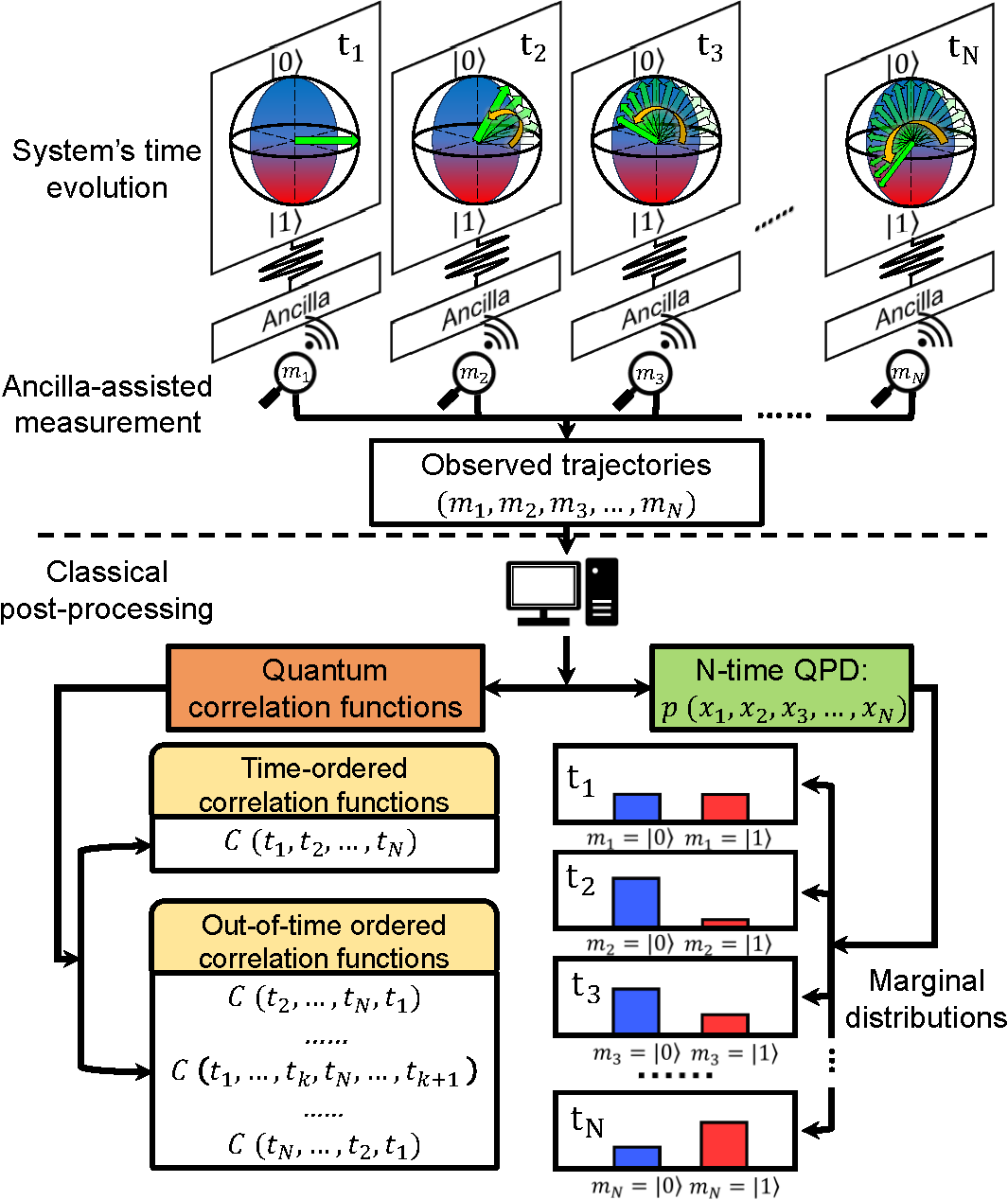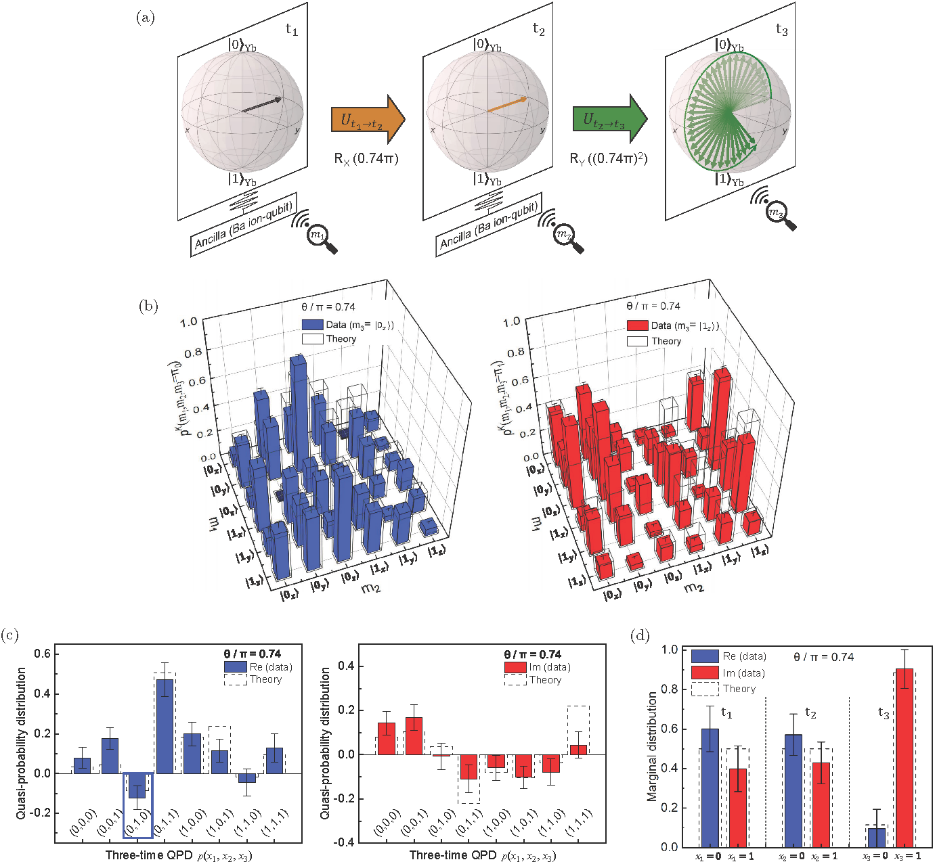Kihwan Kim’s research group make progress in the field of multi-time quantum measurement
2024/10/17
Recently, Professor Kihwan Kim and Assistant Researcher Pengfei Wang from the ion trap research group made notable advancements in multi-time quantum measurements. Collaborating with scientists in institutions such as Tsinghua University, Korea Institute for Advanced Study, Imperial College London, and the National University of Defense Technology, they utilized a 171Yb+-138Ba+ hybrid ion trap system to explore quantum measurements at multiple time points. Their findings were published in “Nature Communications” on October 16, under the title "Snapshotting quantum dynamics at multiple time points" .
Quantum measurements pose unique challenges compared to classical systems. The act of quantum measurement can disturb or collapse the quantum system being observed, a phenomenon known as “quantum measurement back-action”. This disturbance complicates the study of multi time correlation properties in quantum systems, as sequential measurements can interfere with one another and lead to incorrect results.
To address these challenges, the research team introduced a novel measurement scheme termed “Snapshotting quantum dynamics at multiple time points”. This method employs an ancillary quantum system to perform ancilla-assisted measurements on the target quantum system. By reconstructing data from these multiple measurements, they effectively mitigated the impact of measurement back-action, allowing for an correct reconstruction of the target quantum system's evolution. In their experiments, 171Yb+ ions were used as the target system while 138Ba+ ions served as the ancillary system. The unique characteristics of this hybrid ion setup enabled detection of the ancillary system without disturbing the target. Additionally, by repeatedly measuring and resetting the ancillary qubit, they achieved qubit reuse of the ancillary qubit, enabling multiple sequential measurements using just one ancillary qubit.
This achievement not only provides a novel measurement scheme for exploring time correlation properties of quantum systems without being limited by measurement back-action but also allows for exponential many of statistical information about quantum systems to be obtained from one set of measurements. Furthermore, this experiment demonstrated several key technical capabilities of hybrid ion trap systems: mid-circuit detection and initialization, qubit reuse, and information transfer between hybrid ions, which are essential for large-scale ion trap based quantum computing.

Schematic procedure for snapshotting quantum dynamics

Experimental reconstruction of the three-time QPD and marginal distribution by the ancilla-assisted measurement
The corresponding authors of this paper are Professor Kihwan Kim from our institution, Professor M. S. Kim from Imperial College London, and Professor Hyukjoon Kwon from Korea Institute for Advanced Study. The co-first authors are Assistant Researcher Pengfei Wang from our institution, Assistant Researcher Chunyang Luan from the National University of Defense Technology, and Professor Hyukjoon Kwon. Other authors include Wentao Chen, Mu Qiao, Zinan Zhou, and Kaizhao Wang from Tsinghua University. This work was supported by the Innovation Program for Quantum Science and Technology, The National Natural Science Foundation of China.
Paper link:https://www.nature.com/articles/s41467-024-53051-5
 中文
中文 Email
Email QCloud
QCloud Log in
Log in
